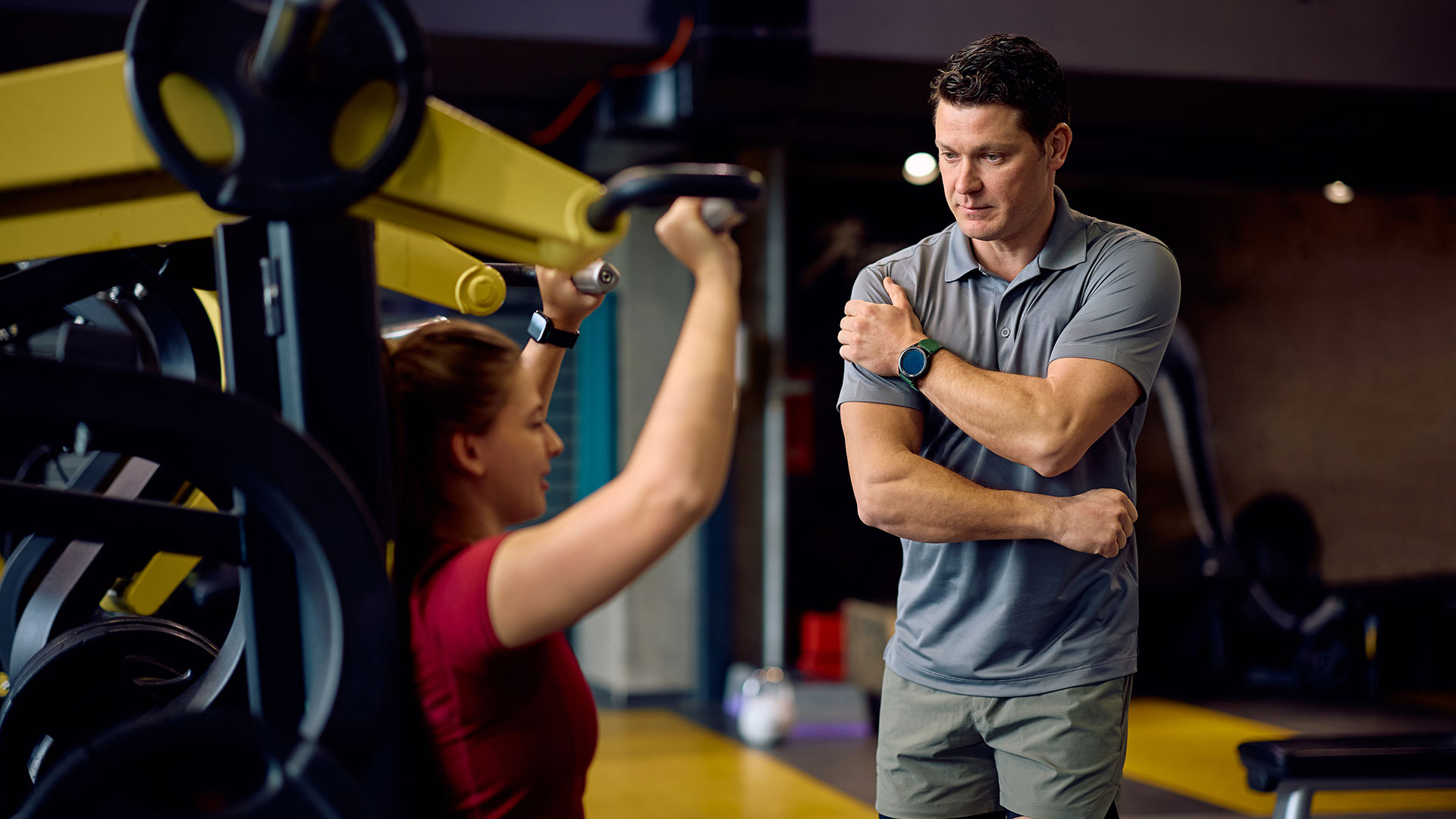Starting a fitness journey can feel overwhelming. Between different exercises, gym equipment, and the endless stream of advice online, beginners often struggle to know what really matters. The truth is that long-term success in fitness doesn’t come from random workouts but from following proven training principles. These principles are the foundation of exercise science and are used by professional athletes, physical therapists, and personal trainers worldwide.
When you understand training principles, you no longer see exercise as guesswork. Instead, you learn why certain movements work, how to avoid common mistakes, and how to build progress step by step. This approach saves time, reduces the risk of injury, and ensures that every minute you spend in the gym pushes you closer to your goal whether that’s strength, fat loss, or better posture.
Think of training principles as a GPS for fitness. Just like a navigation system keeps you on the right path, these principles guide your body toward safe and effective results. Without them, it’s easy to overtrain, undertrain, or train in a way that doesn’t match your goals. For beginners, mastering these basics is not optional it’s essential.
The Importance of Training Principles in Fitness
At their core, training principles are universal rules based on how the human body adapts to stress. They explain why exercise works, how muscles grow, and why rest is just as important as lifting weights. Research from exercise physiology consistently shows that structured training programs grounded in these principles produce faster, safer, and more sustainable progress than random, unplanned workouts.
One key reason training principles matter is injury prevention. Beginners often feel motivated to push hard at the start but risk straining muscles or damaging joints if they skip warm-ups or lift weights that are too heavy. Following guidelines like gradual overload and proper recovery helps your body adapt without breaking down. For example, studies in sports medicine show that athletes who ignore recovery increase their risk of tendonitis, muscle strains, and even chronic pain. Beginners can avoid these setbacks simply by respecting the science.
Another reason is long-term adherence. Many beginners quit after a few weeks because they don’t see results. By applying training principles, such as specificity (choosing exercises that match your goals) and progression (gradually increasing difficulty) you create visible progress that keeps you motivated. Small wins, like lifting 5 pounds heavier after three weeks or running for an extra minute without stopping, build confidence. Over time, this consistency leads to meaningful changes in strength, endurance, and body composition.
In short, training principles act like the blueprint of a house. If you try to build without a plan, the structure collapses. If you use the blueprint, you create something solid and lasting. Beginners who understand this blueprint don’t just survive the gym they thrive.
Principle of Specificity
The principle of specificity means your body adapts to the exact type of training you do. In simple terms, if you want to get better at running, you need to run. If your goal is to increase muscle strength, you need to lift progressively heavier weights. Your body is highly efficient, it learns to handle the exact stress you place on it, but improvements don’t automatically transfer to other activities.
For beginners, this principle is critical because it prevents wasted effort. Many people start exercising with vague goals like “I want to get fit.” But fitness can mean different things: cardiovascular endurance, muscular strength, flexibility, or body composition. If someone wants to build stronger legs for hiking, squats and lunges will be more effective than endless cycling. On the other hand, if the goal is to complete a 5K run, spending all your time lifting weights won’t prepare your cardiovascular system for the challenge.
Research confirms this. Studies in exercise physiology show that endurance training primarily improves aerobic capacity (VO₂ max, heart efficiency, and stamina), while resistance training increases muscle strength and hypertrophy. The adaptations are goal-specific, not interchangeable. For beginners, the lesson is clear: train according to your goals. If your goal is weight loss, prioritize cardio and strength training in combination. If your goal is posture correction, choose exercises that strengthen weak muscles and stretch tight ones.
Beginner Tip: Write down one primary goal before starting your program. Then ask: Does this exercise directly help me achieve it? If the answer is no, save it for later.
Principle of Overload
The principle of overload states that to make progress, you must challenge your body beyond its normal comfort zone. Without extra stress, the body has no reason to adapt, and you’ll quickly hit a plateau. For beginners, this doesn’t mean lifting the heaviest weights in the gym. Instead, it means gradually increasing the difficulty of your workouts so your muscles, heart, and lungs grow stronger over time.
There are many ways to apply overload:
-
Increase resistance: Add more weight to your lifts.
-
ncrease repetitions or sets: Do more total work.
-
Increase intensity: Walk faster, run farther, or reduce rest between sets.
-
Increase complexity: Move from machines to free weights or add balance challenges.
Research backs up the power of progressive overload. Studies show that resistance training programs using gradual increases in load consistently produce greater muscle hypertrophy and strength than programs where the load remains the same. For example, a beginner who starts bench pressing with 20 kg and adds 1–2 kg every week will see steady strength gains, while someone who never increases weight may stall after a month.
For beginners, the key is gradual progression. Jumping too fast in weight or intensity leads to poor form and higher injury risk. A safe guideline is the “10% rule”: increase volume or intensity by no more than 10% per week. This ensures your muscles, joints, and nervous system adapt safely while still moving forward.
Beginner Tip: Keep a workout log. Record weights, reps, and sets. Each week, aim for a small improvement. Over time, these small steps create big results.
Principle of Recovery
Recovery is not laziness, it’s science. The principle of recovery states that your body needs time to repair and adapt after training. Every time you exercise, especially with resistance training, you create small amounts of stress on your muscles, joints, and nervous system. During recovery, your body rebuilds these tissues stronger and more resilient than before. Without recovery, progress stalls, and the risk of injury rises.
For beginners, recovery often feels counterintuitive. Many think working out every day produces faster results. In reality, overtraining can lead to fatigue, poor performance, and even setbacks like muscle strains. Studies show that insufficient rest increases the stress hormone cortisol, which not only slows muscle repair but can also interfere with fat loss. Quality sleep, proper nutrition, and active recovery (like stretching or light walking) are as essential as lifting weights or running.
Research in sports medicine consistently highlights the value of 48–72 hours of rest for the same muscle group after strength training. For example, if you train legs on Monday, it’s best to give them at least until Wednesday or Thursday to recover fully before hitting them again. For cardio, the intensity matters: light jogging can be done daily, while high-intensity interval training (HIIT) should be spaced out to allow cardiovascular and muscular recovery.
Beginner Tip: Plan rest days into your weekly routine. A simple pattern could be training 3 days a week with alternating rest days (e.g., Monday, Wednesday, Friday). Use off-days for stretching, yoga, or mobility work instead of complete inactivity.
Principle of Reversibility
The principle of reversibility is often summarized as: “Use it or lose it.” When you stop training, the gains you’ve made whether strength, endurance, or flexibility, begin to decline. For beginners, this principle explains why consistency matters more than perfection. Missing one workout isn’t harmful, but taking weeks or months off will undo much of your progress.
Research shows that endurance declines faster than strength. For example, aerobic fitness can begin to decrease within two weeks of inactivity, while strength levels are usually maintained a bit longer but still start to decline noticeably within 4–6 weeks. Muscle size (hypertrophy) also begins to shrink without stimulation. This is why professional athletes, even during off-seasons, maintain some level of training to preserve their foundation.
For beginners, reversibility often explains the frustrating cycle of “starting over.” Someone might train for three months, see progress, then stop for a month. When they return, they feel weaker, tire faster, and sometimes lose motivation because they think all the effort was wasted. The good news is that the body has muscle memory. Studies show that retraining after a break allows you to regain lost strength and size faster than the first time.
Beginner Tip: Focus on consistency, not perfection. Even if you’re busy, try to fit in shorter workouts instead of quitting altogether. A 20-minute session twice a week is far better than nothing and will help maintain your fitness base until you can train more regularly again.
Principle of Individual Differences
One of the most overlooked truths in fitness is that no two bodies are exactly alike. The principle of individual differences reminds us that genetics, age, gender, lifestyle, and training history all influence how someone responds to exercise. This is why two beginners can follow the same program, yet one builds muscle quickly while the other gains endurance more easily.
For example, genetics affect muscle fiber composition. Some people naturally have more fast-twitch fibers, which help with strength and explosive movements, while others have more slow-twitch fibers, which favor endurance activities like long-distance running. Age also plays a role: younger trainees often recover faster and build strength more easily, while older adults may need more recovery and should focus on joint-friendly exercises.
Lifestyle factors matter, too. Someone who works long shifts standing all day may not recover the same way as someone with a desk job. Stress, nutrition, and sleep all impact progress. Studies show that sleep deprivation significantly reduces muscle recovery and growth. For beginners, this means your results will not look exactly like your friend’s even if you’re doing the same workouts. That’s normal, and it doesn’t mean you’re doing something wrong.
Beginner Tip: Avoid constant comparison. Instead of measuring yourself against others, track your own progress. Use metrics like how much weight you lift, how many push-ups you can do, or how long you can run without stopping. Focus on being better than your past self, not someone else.
Putting Training Principles into Practice
Knowing the principles is one thing applying them is where real change happens. For beginners, the best way to practice these principles is to design a simple, structured routine that balances specificity, overload, recovery, and individuality. This creates a safe foundation that you can build on for months and even years.
Here’s an example of how to structure a 3-day beginner plan:
-
Day 1: Strength training (full body) – Squats, push-ups, dumbbell rows, planks.
-
Day 2: Rest or light cardio/stretching
-
Day 3: Cardio focus – Brisk walking, jogging, or cycling for 20–30 minutes.
-
Day 4: Rest
-
Day 5: Strength training (full body with variations) – Deadlifts with light weights, overhead press, lunges, glute bridges.
-
Day 6: Active recovery – Yoga, mobility, or light activity.
-
Day 7: Rest
This schedule applies specificity (weights for strength, cardio for endurance), overload (gradually adding difficulty), recovery (planned rest days), and individuality (adjust intensity based on how you feel). It also avoids the common beginner mistake of doing “everything every day,” which often leads to burnout.
Studies on beginner training programs confirm that 2–3 days of resistance training per week is effective for strength gains, while 150 minutes of moderate cardio improves cardiovascular health. The key is not perfection, but consistency. Even if you miss a session, return to the plan instead of quitting altogether.
Beginner Tip: Start with manageable goals. Instead of aiming for six workouts a week, begin with three and build up as your body adapts. Remember: the best workout program is the one you can stick with.
Common Beginner Mistakes to Avoid
Starting out in fitness is exciting, but beginners often fall into traps that slow progress or even cause injuries. The good news is that these mistakes are easy to avoid once you know what to look for.
1. Skipping Warm-ups and Cool-downs
Many people jump straight into lifting weights or running without preparing their bodies. Research shows that warming up increases blood flow, improves joint mobility, and reduces injury risk. A simple 5–10 minute warm-up with dynamic stretches or light cardio is enough. Similarly, skipping cool-down stretches can lead to tight muscles and slower recovery.
2. Lifting Too Heavy, Too Soon
Motivation often pushes beginners to lift weights that are beyond their current capacity. This sacrifices form and increases the risk of strains or joint problems. Studies on injury prevention emphasize that beginners should focus on technique first, gradually adding weight only when they can maintain proper form. For example, mastering bodyweight squats before loading a barbell ensures safer progress.
3. Ignoring Recovery
Beginners sometimes think more is better and train every day. But as we discussed earlier, without recovery, your body cannot adapt. Overtraining leads to fatigue, poor sleep, and stalled results. Beginners should treat rest days as part of their training, not time wasted.
4. Not Tracking Progress
Without tracking, it’s hard to notice improvements. Keeping a simple log of weights, reps, and cardio duration helps you stay motivated and apply progressive overload correctly. Even small progress, like one more push-up or one extra minute of jogging, is a victory worth recording.
Beginner Tip: Remember that mistakes are part of the learning process. Instead of chasing perfection, focus on building safe and sustainable habits.
Conclusion
The journey into fitness doesn’t have to be confusing. By understanding and applying the five key training principles: specificity, overload, recovery, reversibility, and individuality you create a roadmap for success. These principles are not abstract theories; they’re practical tools used by coaches, athletes, and health professionals to guide safe and effective progress.
For beginners, the most important lesson is consistency. You don’t need to train every day or master every exercise at once. Instead, focus on gradual improvements, listen to your body, and celebrate small wins along the way. Fitness is a marathon, not a sprint, and steady progress will always beat quick fixes.
Finally, remember that your journey is unique. Comparing yourself to others only distracts you from your own growth. Apply the principles, stay patient, and let science guide you. With time, effort, and the right mindset, you’ll not only reach your goals you’ll build a foundation of health and strength that lasts a lifetime.
FAQs: Beginner’s Guide to Training Principles
1. What are the main training principles beginners should know?
The five core training principles are specificity, overload, recovery, reversibility, and individuality. They explain how your body adapts to exercise and guide you in building safe, effective workouts. Beginners who understand these principles progress faster and reduce the risk of injury.
2. How often should beginners train each week?
Research suggests that beginners see the best results with 2–3 days of strength training per week plus 150 minutes of moderate cardio spread throughout the week. This balance gives enough stimulus for progress while allowing proper recovery.
3. What happens if I stop working out for a few weeks?
This is explained by the principle of reversibility. If you stop exercising, your fitness gradually declines. Endurance decreases within two weeks, and strength starts to drop after 4–6 weeks. The good news is that your body has “muscle memory,” so regaining lost progress is faster the second time.
4. How can beginners avoid common workout mistakes?
Focus on form before weight, include warm-ups and cool-downs, and plan rest days. Tracking your progress in a workout log also helps you apply progressive overload correctly. Avoid comparing yourself to others stick to your own pace and goals.
5. What’s the best way to apply training principles in the gym?
Start with a simple weekly plan: two to three strength training sessions, one to two cardio sessions, and active recovery days. Gradually increase weight, reps, or intensity to apply overload. Be specific with your goals train for what you want to achieve and respect your body’s need for recovery.



